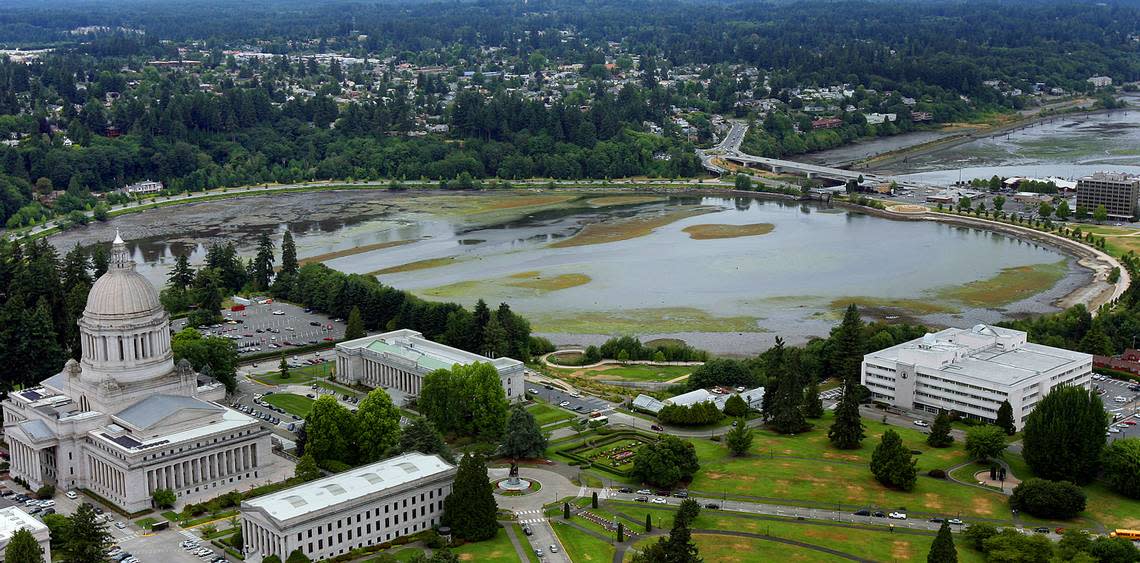What lies beneath? Estuary work to find answer this week by draining Capitol Lake

Plans to restore Capitol Lake to its natural state as the Deschutes River estuary are moving forward. This week, those who visit downtown will be able to see the lake at its lowest levels and what’s been lying beneath the waters for years.
The Washington State Department of Enterprise Services is temporarily lowering the lake levels to gather data for the design of the future restored Deschutes Estuary, according to a news release from the department.
The work will be done over the course of four days, when DES will open the gate on the 5th Avenue dam to allow water to leave the lake and enter Budd Inlet until parts of the lake bed are visible.
“Crews will take advantage of the low levels to study the underwater features, including the 5th Avenue dam structure and fish gate, composition of current sediment deposits, and to confirm outfall locations, underground pipes used to disperse stormwater,” according to the news release.
The water is expected to be at its lowest between Wednesday, July 24, and Thursday, July 25. The release said visitors to the lake will see exposed sediment, but that the conditions will not be a good indication of what the restored estuary will look or smell like.
Instead, the work is being done to see how much sediment has accumulated behind the dam and decreased the lake depth. The department also will fly a drone over the lake to record conditions and topography of the lake bed.
DES then will close the gate at the dam and allow the Deschutes River to fully refill Capitol Lake. Water will cover the lake-bed sediment within a few days, but DES expects it could take until Aug. 5 for the lake to fully refill.
The pedestrian path around Deschutes Parkway and Capitol Lake will remain open, according to the release. For safety, DES is asking visitors not to go out onto the exposed sediment as the lake remains closed. And it prevents the spread of the invasive New Zealand mud snail species that led to the public access closure in 2009.
The lake’s future as an estuary filled with brackish water is expected to get rid of the infestation, according to the release.
In the meantime, crews will have to decontaminate their gear to make sure they don’t help the species spread.
DES regularly lowers the lake level when needed for maintenance work and to reduce risk of flooding during severe weather, according to the release.

